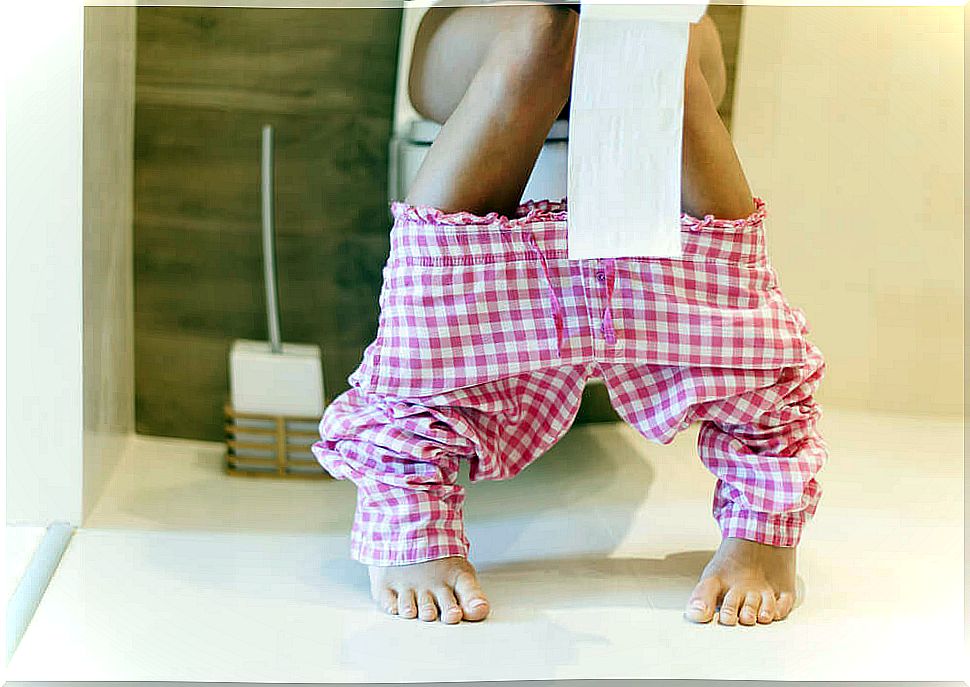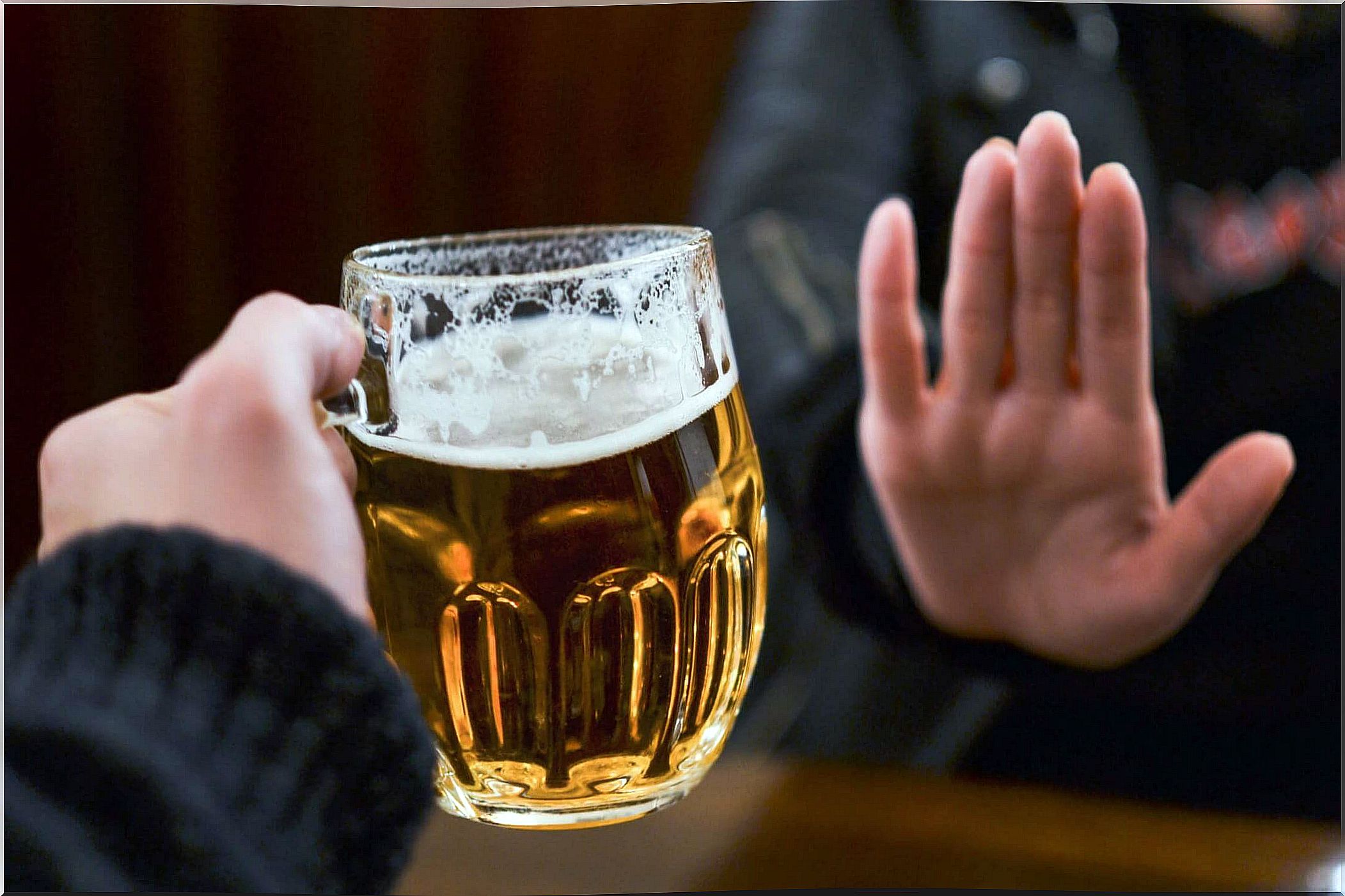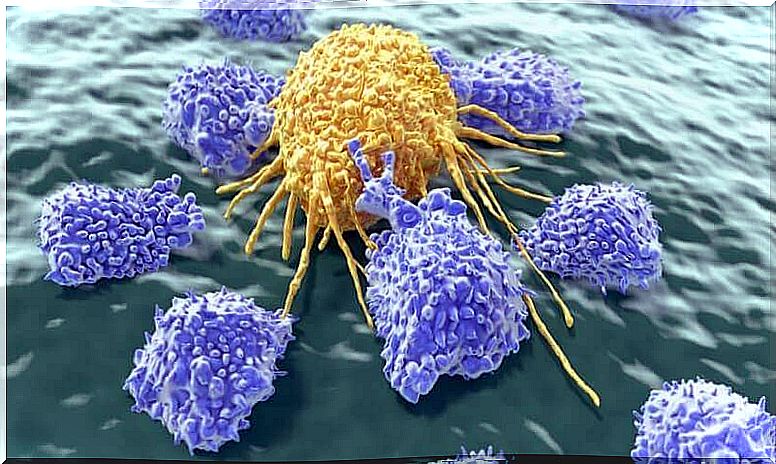White Or Pale Stools: Causes Of Their Appearance And Treatment

Feces give us information about the condition of the intestines and digestive tract. A change in color can be a warning sign of the presence of a disease. For example, white stool indicates that there is a problem with the body.
Typically, stools vary in a lot of shades of brown and even green and black. However, when we notice the presence of white or pale stools, what should we do?
White or pale stools
When the stool is white or clayish, this indicates that we have a problem with the biliary system, which includes the pancreas, liver, or gallbladder. The brown color of feces is given by bile salts, secreted by the liver.
When they are white, they can be related to an infection in the liver, which reduces the production of bile. Or maybe there may be an obstruction in the bile ducts. Because of this, there is an inability of the digestive system to absorb fats correctly.
There are also light colored (yellow to gray) and greasy stools. This condition is called “acolia”.
It is common to have a problem at some point in our lives. Over time, changes occur that can be simple and temporary or, conversely, worrisome and impressive.
Possible causes of white stools
White stools can be the result of various issues, such as consumption of certain medications, bad lifestyle habits or specific illnesses.
1. Medicines

Taking certain medications causes people’s stools to turn white. An example of this is antibiotics used to treat infections such as tuberculosis or intestinal discomfort such as diarrhea.
On the other hand, anti-inflammatory drugs and oral contraceptives can also cause white stools. Similarly, anabolic steroids can cause drug-induced hepatitis in addition to white stools.
In these cases, white stools usually normalize a few weeks after stopping the medication that causes this change.
2. Hepatitis
Hepatitis is inflammation of the liver, caused by the hepatitis A, B or C virus (the latter being the most dangerous as it can be fatal).
One of the symptoms of hepatitis is pale or clay-colored stools. This sign is caused by the malfunction of the liver.
3. Alcoholic hepatitis

The cause of this disease is excessive alcohol consumption. It manifests itself with inflammation of the liver. And its severity will depend on the amount of alcohol ingested and the duration of this habit.
Symptoms are ascites, fatigue, edema, hepatic encephalopathy, and jaundice. Hepatitis is one of the causes that result in white stools, and both alcoholic and viral can cause cirrhosis.
4. Biliary cirrhosis
biliary cirrhosis is a chronic and irreversible disease of the end-stage liver . It occurs when liver cells are destroyed, causing irritation and inflammation of the liver’s bile ducts.
For this reason, the flow of bile is blocked and liver cells are damaged. Afterwards, a scarring called cirrhosis forms. One of the many effects of cirrhosis is that the stool turns white.
5. Cancer

Some cancers can cause pale or pale stools , along with fatigue. Pancreatic cancer, biliary tumors, and other cancers that block the bile duct cause the stool to turn clay or pale yellow in color because of the absence of digestive enzymes from the pancreas.
This can also cause fatigue as food is not properly digested and nutrients are not absorbed, resulting in possible malnutrition.
6. Gallstones
Gallstones are solidified debris in the gallbladder that obstruct the flow of bile. The stones are formed by cholesterol or hardened bilirubin.
When gallstones are large, they sometimes block the bile ducts, which release bile to the intestines. The result of this anomaly is pale colored stools.
At the same time, if their size is considerable and they do not disappear with medication, surgery should be performed to remove them.
7. Primary sclerosing cholangitis

Primary sclerosing cholangitis is a disease in which the bile ducts become inflamed or scar tissue forms in them. This condition causes a decompensation of the bile flow, which does not reach the stool correctly, causing its lack of color.
However, this disease can be treated with medication or surgical intervention.
Diagnosis and treatment of white stools
The appearance of white stools is a serious condition that should be checked quickly by a doctor. The professional must indicate an adequate treatment as soon as the causes are discovered and diagnosed.
The exams that must be performed to have an accurate diagnosis by the doctor are as follows:
- Blood Test: Values will reflect any abnormalities.
- Computed tomography: this is a diagnostic test that generates an image of the interior of the body.
- Endoscopic retrograde cholangiopancreatography (ERCP): a special type of magnetic resonance imaging that captures detailed images of the biliary system.
- Abdominal ultrasound: creates an image of the organs to make sure everything is in order and in place.
- Liver function tests.
- Surgery:
Once the cause of white stools is treated, the problem should be reversed. However, if it is not curable, the stool will maintain its abnormal appearance and treatment will need to be more specific.
White stools in children: causes and treatment

It is always important to be aware of our children’s stools as they can reveal health problems. White stools, or white diarrhea, are common in children, sometimes due to milk or milk products that do not go down well.
When we have children, we must always be informed about the causes of white stools, as well as what is the most appropriate treatment for the case.
Causes of white stools in children
This problem can develop by any of the following factors:
- Hepatitis.
- Consumption of cold foods.
- Quality, quantity and proportion of food ingested.
- Malabsorption of food due to some small parasite that damages the intestine.
Treatment of white or pale stools in children
The first thing you should do when a child has white or pale stools is to see a doctor. Most likely, the provider will ask for a stool culture to be performed on the child.
In these circumstances, it is most convenient to drink plenty of fluids to avoid dehydration. The child needs a lot of water and mineral salts. Sometimes there are germs that cause white stools. If this is the case, you may need antibiotic treatment.
Finally, to treat children, be aware that you should never resort to antidiarrheal drugs that contain loperamide without a prescription. The same recommendation applies to any other medication that has not been recommended by a professional.









